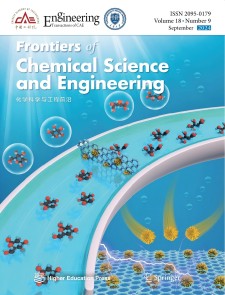Ni nanoparticles with high thermal stability for methane dry reforming
Abstract
The upgrading of underutilized methane in shale gas with anthropogenic CO2 can produce the value-added syngas via dry reforming. Nickel-based catalysts, due to their efficiency and cost-effectiveness, have received widespread attention. However, Ni-catalyzed dry reforming of methane is usually subjected to sintering or coking-induced instability. To address these issues, a series of Al2O3-supported nickel nanoparticle catalysts with uniform sizes are synthesized by varying the calcination temperatures and applied in methane dry reforming (DRM). Ni/Al2O3-700 °C catalyst behaves better catalytic performance compared to the other catalysts, which can be attributed to its higher metal dispersion and stronger metal-support interaction. In addition, the abundant moderate-strength basic sites and optimal AlIV/AlVI ratio can promote the adsorption and activation of CO2 and suppress the deep cracking of CH4 for Ni/Al2O3-700 °C catalyst, respectively, causing the enhancement of anti-coking performance. Furthermore, combining CH4-temperature programmed surface reaction and in situ Fourier transform infrared spectroscopy demonstrates that the presence of CO2 can promote the activation of CH4 for Ni/Al2O3-700 °C catalyst, which is rate-determining step for DRM system. These findings provide valuable theoretical guidance for the rational design of Ni-based catalysts with enhanced catalytic performance.

 求助内容:
求助内容: 应助结果提醒方式:
应助结果提醒方式:


